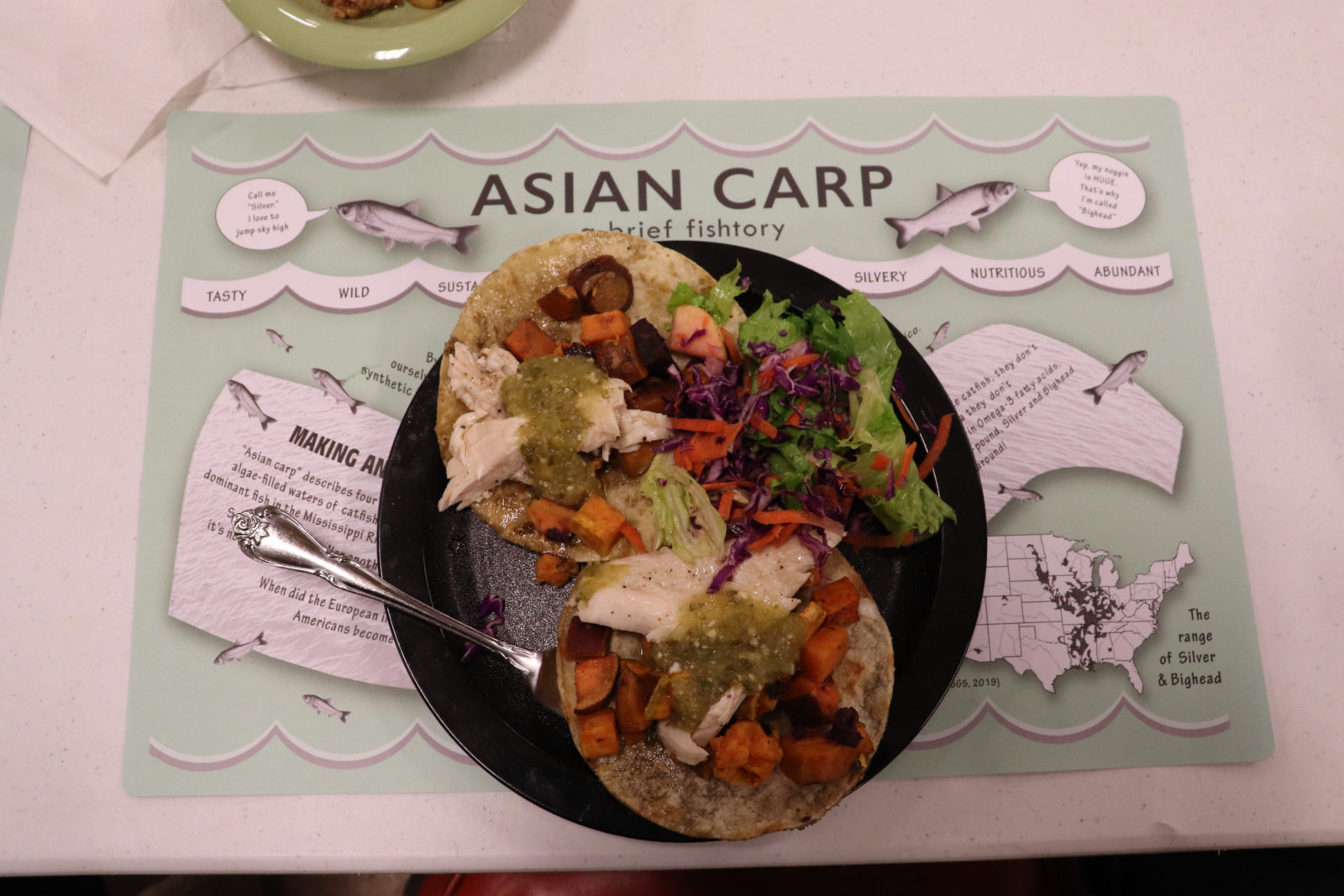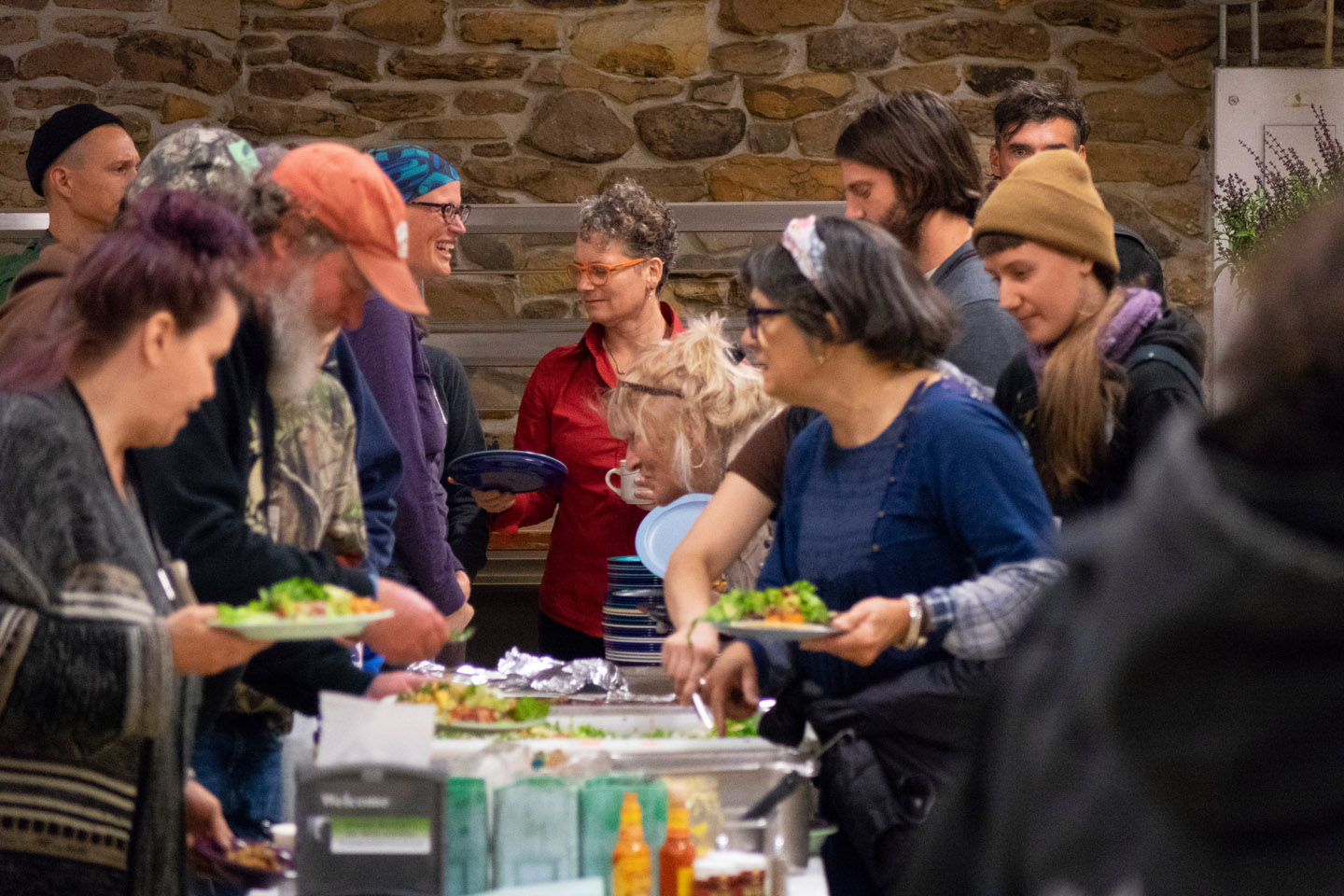Of Forests, of Rivers, and of Meals
Eating Our Way to a Recuperative Ecology
What does the story of the Asian carp in the lower Mississippi river system tell us about fishing policies, river engineering, trade, and dietary habits? Sarah Lewison addresses this question on an experiential level as she relates the concerns of local activists to an approach to sustainability that thinks through communality and our expectations around food.
Shawnee National Forest is a remnant of a forest that once covered the vast area between the Ohio and Mississippi Rivers. Thirty years ago, when hundreds of acres of oak and hickory were slated for commercial timber harvest, Southern Illinois activists buried themselves up to their necks to block the roads. They went to court, over and over, until the tree removal was stopped. Today, these same local activists are hosting an international gathering to amplify the value of forests at a critical environmental juncture, as atmospheric carbon dioxide reaches above 400 parts per million. Diverse, thriving forests, which are one of the most powerful mitigators of atmospheric carbon, are increasingly threatened globally. Furthermore, under the Trump administration there have been draconian rollbacks to protections from air and water pollution, as well as numerous other challenges that bring the atmosphere closer to a tipping point. We’re at an environmental education center near Carbondale, Illinois, and as the sun slips behind the trees, strategy sessions conclude and the 200-plus attendees straggle into a huge hall for dinner. Alongside the older folk is a new generation of activists dedicated to ending extractive economies while also building a movement that supports the construction of just relationships.
The website of the North American Forest and Climate Movement proclaims, “We promote ¡Buen vivir!—life in harmony between humans, communities, and the Earth where work is not a job to make others wealthier, but for a livelihood that is sustaining, fulfilling, and in tune with the common good.”
The conveners of the North American Forest and Climate Movement Convergence are asking for no less than societal transformation. For those of us researching as part of the Mississippi: An Anthropocene River project at Confluence Ecologies (Field Station 4), it felt important to engage with this organization in solidarity and around our shared commitments to planetary health. And so, a “Conflurgence” was born with the Asian Carp Convivial Meal. The forest folk promote ¡Buen vivir! and reciprocally we wanted to add ¡Con vivir! through a convivial engaging of the togetherness of forest and river as precarious ecologies, and of the Asian carp and humans as entangled species.
My artist/biologist collaborator Andy Yang and I have been mapping the social and ecological relationships between humans and Asian carp in the lower Mississippi river system, by researching fisheries policy, river engineering, commerce, and human dietary habit. We are energized by the question of what it would take for people to perceive their own watershed as a source of plentiful and nutritious food. Field Station 4 has joined this convening of activists and knowledge-givers to share a meal, and to contribute to this meal regionally grown and wild-caught fish that have been cast as an enemy species. These two varieties of Asian carp, bighead and silver, were introduced as an experiment in the biological control of algae growth in aquaculture operations. The carp efficiently cleaned up algae, but then they escaped into the rivers to become a newer “weed.” Although treasured as a tasty source of protein in China, bigheads and silvers get a bad rap in the US. They are bony and strange looking, and the silvers have a nasty habit of leaping out of the water, presenting a hazard to humans in boats.
People chat in small groups, find seats for themselves at the communal tables, and then line up for a banquet-style service. The kitchen staff sets out the food. The tables are covered with our novelty printed-paper placemats that playfully share information about the fish—their nutritional value (high in protein and omega-3s!) and their histories as immigrants. They ask the reader to wonder how long the fish will live in the Mississippi watershed before they lose the “Asian” appellation and become “American.” We offer what one could call an “encounter story” and provide new descriptors for the fish: Silvery! Jumpy! Wild! Our goal is to change their reputation through an event that associates feelings of joy and conviviality with the experience of ingesting the flesh of an animal that thrives so well in local waters.
To live in harmony with the Earth means to mix our fates with that Earth, however contingent and troublesome that relationship may be. The connection between forest and fish and rivers and people seems more pointed in the weeks following the event, as we watch fires burning in Brazil as land is converted from forest cover to cattle fodder. What might a recuperative ecology look like for forests and rivers alike?
We try to imagine people eating protein from local rivers—eating the river—so that the load of Asian carp on the riverine ecosystem is reduced and, at the same time, so that the region’s production and import of beef, with all its externalities, is minimized. We try to imagine a thriving carp economy replacing the waste of the beef and fossil fuel economies. Sustainability means it might be necessary to reduce expectations of dietary consistency, to accept that food and fish have their seasons, just as do humans. In the moments we are given to speak, Andy says, “As the fish enters your body, you become part of the ecology too.” It is almost like an oath. The changes we hope for will be much longer in the coming and they will take many more such experiments, but for this evening, as I am told by one attendee, the room was full of love.
Recipe for silver and bighead carp filets for 200 people
Approx. 65 pounds bighead and silver carp filets
32 lemons (1 lemon per 2 pounds of carp)
Approx. 33 teaspoons ground mixed peppercorns (1/2 teaspoon per pound of carp)
Approx. 50 teaspoons salt (1/2 to 1 teaspoon per pound of carp)
65 tablespoons brown butter (smear of brown butter per pound of carp)
2-3 Cups of capers. (Figure 1-2 TB per lb. of filet to taste)
Olive oil (optional)
Preheat oven to 375°F
- Lay out filets on baking tray
- Squeeze lemon on both sides
- Sprinkle on some olive oil, if using
- Sprinkle both sides of filets with salt and ground peppercorns
- Smear both sides with brown butter.*
- Bake 10 to 15 minutes; done when flakey
- Put in serving dish with some of the sauce left in the pan and sprinkle with capers
*To brown butter, first bring the butter to room temperature. Then cut up the butter into even walnut-sized pieces. Place butter in a thick-bottomed saucepan. A light-colored pan will help you see the browning progress. Let the pieces melt on low heat. Then turn to medium heat, and steadily stir the melted butter with a whisk or heatproof spatula. It will start to foam. Keep stirring. After 5-10 minutes, the butter liquid will turn golden brown as the milk solids sink to the bottom of the pan. Once the solids have settled and turned brown, and your liquid is golden brown, turn off the heat. The result will smell nutty and richly buttery and keeps well under refrigeration. Bring to room temperature before preparing the fish.


